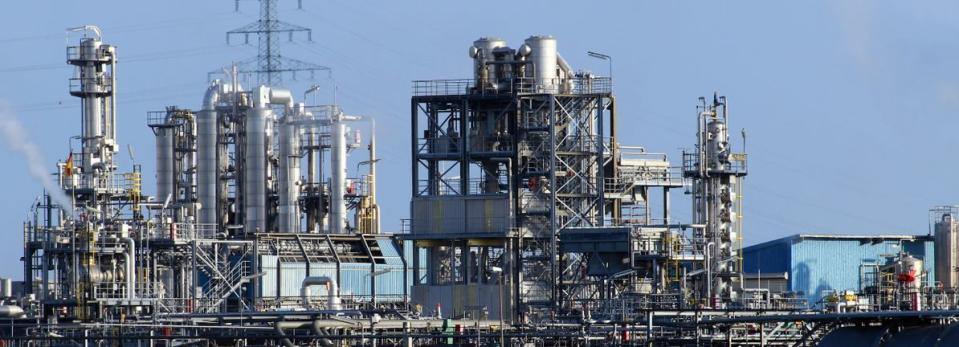Here's How P/E Ratios Can Help Us Understand NewOcean Energy Holdings Limited (HKG:342)

This article is written for those who want to get better at using price to earnings ratios (P/E ratios). We'll apply a basic P/E ratio analysis to NewOcean Energy Holdings Limited's (HKG:342), to help you decide if the stock is worth further research. What is NewOcean Energy Holdings's P/E ratio? Well, based on the last twelve months it is 2.67. That means that at current prices, buyers pay HK$2.67 for every HK$1 in trailing yearly profits.
View our latest analysis for NewOcean Energy Holdings
How Do You Calculate A P/E Ratio?
The formula for P/E is:
Price to Earnings Ratio = Price per Share ÷ Earnings per Share (EPS)
Or for NewOcean Energy Holdings:
P/E of 2.67 = HK$1.170 ÷ HK$0.437 (Based on the year to December 2019.)
(Note: the above calculation results may not be precise due to rounding.)
Is A High Price-to-Earnings Ratio Good?
A higher P/E ratio means that buyers have to pay a higher price for each HK$1 the company has earned over the last year. That is not a good or a bad thing per se, but a high P/E does imply buyers are optimistic about the future.
How Does NewOcean Energy Holdings's P/E Ratio Compare To Its Peers?
We can get an indication of market expectations by looking at the P/E ratio. We can see in the image below that the average P/E (5.7) for companies in the oil and gas industry is higher than NewOcean Energy Holdings's P/E.
Its relatively low P/E ratio indicates that NewOcean Energy Holdings shareholders think it will struggle to do as well as other companies in its industry classification. Since the market seems unimpressed with NewOcean Energy Holdings, it's quite possible it could surprise on the upside. It is arguably worth checking if insiders are buying shares, because that might imply they believe the stock is undervalued.
How Growth Rates Impact P/E Ratios
When earnings fall, the 'E' decreases, over time. That means even if the current P/E is low, it will increase over time if the share price stays flat. A higher P/E should indicate the stock is expensive relative to others -- and that may encourage shareholders to sell.
NewOcean Energy Holdings's earnings per share fell by 15% in the last twelve months. And over the longer term (5 years) earnings per share have decreased 6.4% annually. This growth rate might warrant a below average P/E ratio.
Remember: P/E Ratios Don't Consider The Balance Sheet
It's important to note that the P/E ratio considers the market capitalization, not the enterprise value. That means it doesn't take debt or cash into account. Theoretically, a business can improve its earnings (and produce a lower P/E in the future) by investing in growth. That means taking on debt (or spending its cash).
Spending on growth might be good or bad a few years later, but the point is that the P/E ratio does not account for the option (or lack thereof).
Is Debt Impacting NewOcean Energy Holdings's P/E?
Net debt totals a substantial 277% of NewOcean Energy Holdings's market cap. If you want to compare its P/E ratio to other companies, you must keep in mind that these debt levels would usually warrant a relatively low P/E.
The Bottom Line On NewOcean Energy Holdings's P/E Ratio
NewOcean Energy Holdings's P/E is 2.7 which is below average (9.1) in the HK market. The P/E reflects market pessimism that probably arises from the lack of recent EPS growth, paired with significant leverage.
When the market is wrong about a stock, it gives savvy investors an opportunity. If it is underestimating a company, investors can make money by buying and holding the shares until the market corrects itself. Although we don't have analyst forecasts you might want to assess this data-rich visualization of earnings, revenue and cash flow.
But note: NewOcean Energy Holdings may not be the best stock to buy. So take a peek at this free list of interesting companies with strong recent earnings growth (and a P/E ratio below 20).
If you spot an error that warrants correction, please contact the editor at editorial-team@simplywallst.com. This article by Simply Wall St is general in nature. It does not constitute a recommendation to buy or sell any stock, and does not take account of your objectives, or your financial situation. Simply Wall St has no position in the stocks mentioned.
We aim to bring you long-term focused research analysis driven by fundamental data. Note that our analysis may not factor in the latest price-sensitive company announcements or qualitative material. Thank you for reading.

